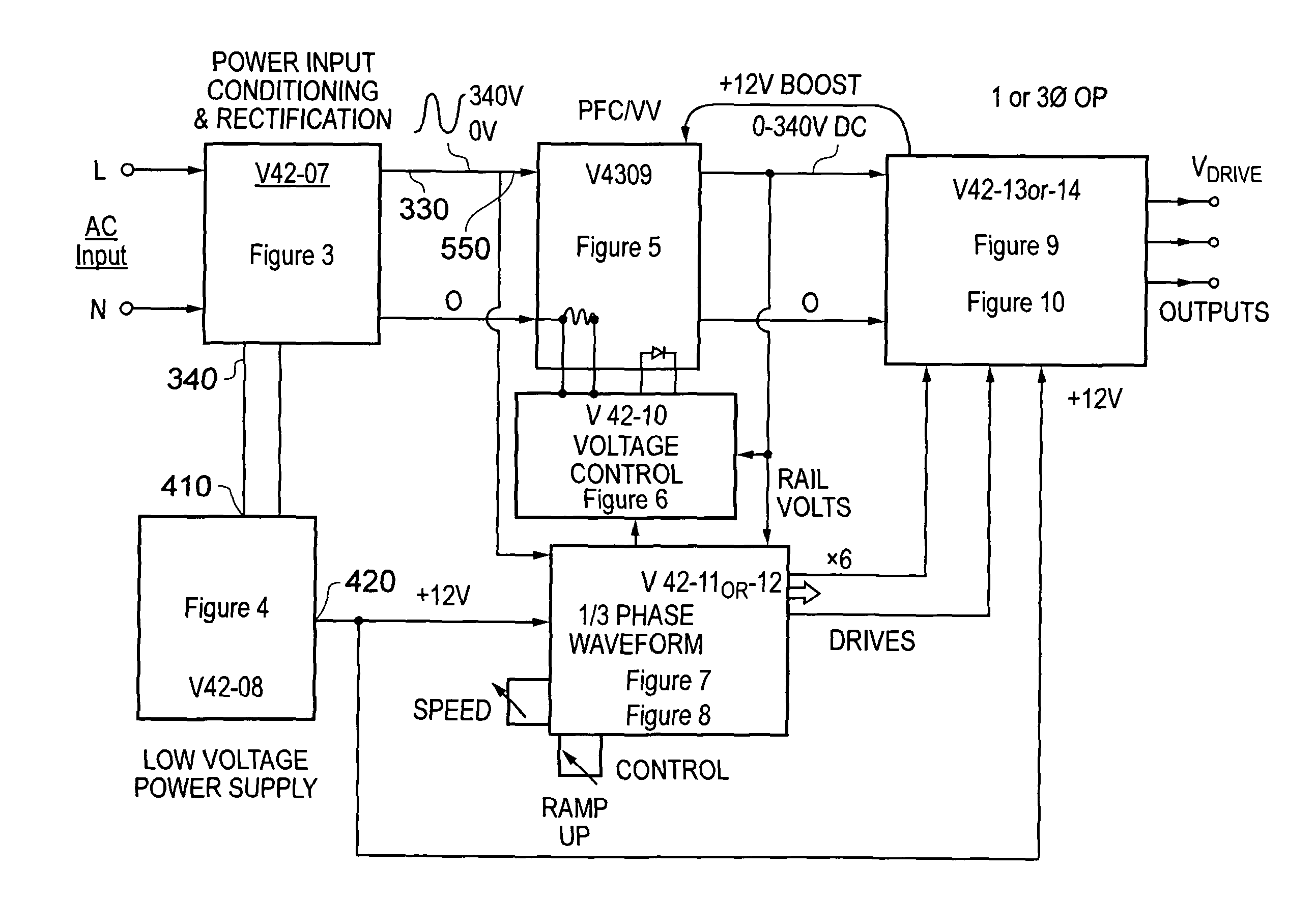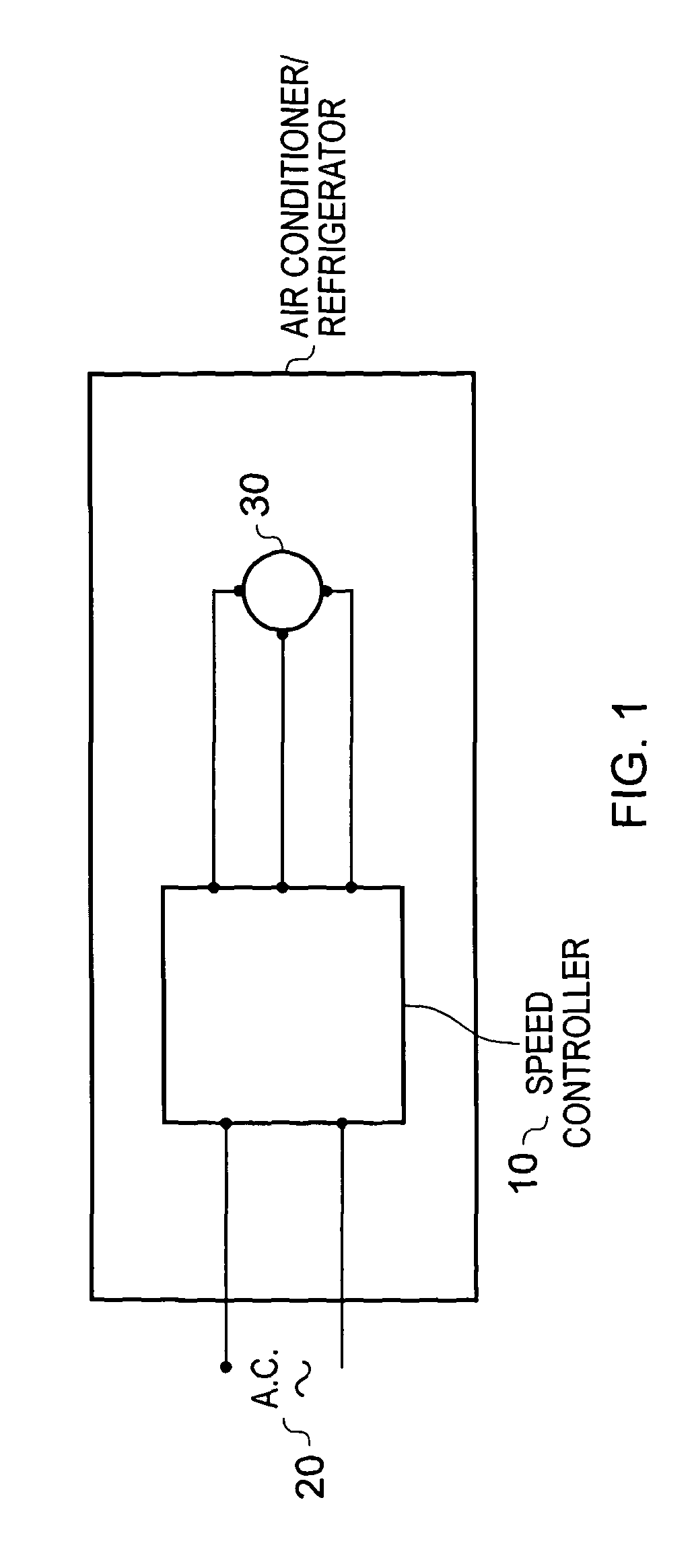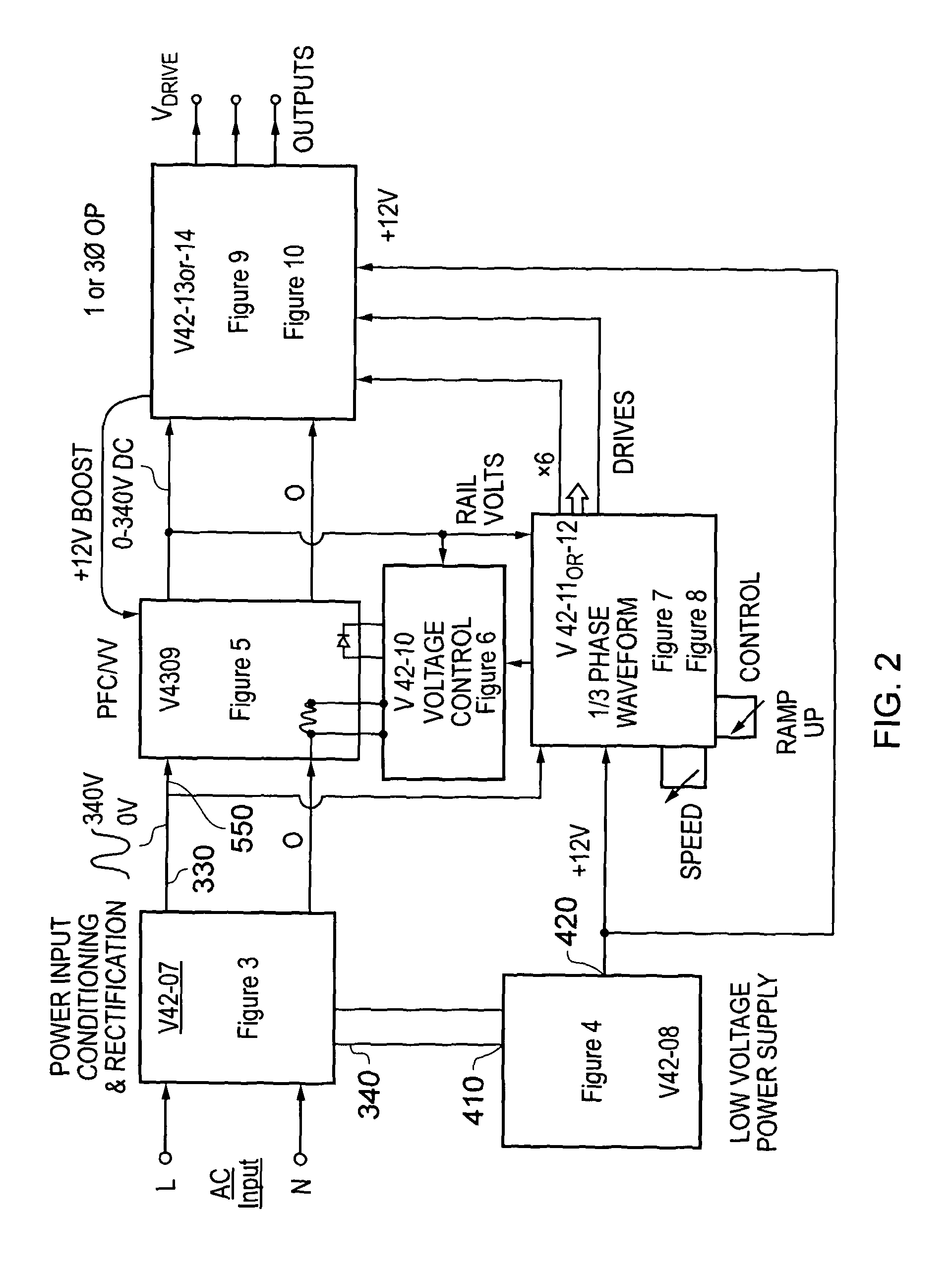A drawback of EC motors has been that they require accurate sensors to control them.
However, a
disadvantage with such systems was that delicate sensing equipment needs to be housed in a motor casing and this was not always possible in harsh or vibrating environments.
The device is likely to suffer from in-rush current surge and there is no
power factor correction.
However, the motor requires auxiliary motor windings which are wound in a non-standard manner and this adds to cost.
The
system is effective but does not allow for any variation in
reactance of the
capacitor and is thus limited in the sense that the
power factor of drive components are prone to giving rise to unpredictable current waveforms.
This is in addition to very poor power factor and
crest factor as well as high inrush currents which results overall in a
system that requires monitoring, control and stabilisation as well as additional ‘front end’ current conditioning components.
However the input waveforms are detrimental to the utility and the output waveforms are detrimental to the motor due to excessive and rapid voltage transients.
However, the fact that so many triacs are employed tends to make this
system less efficient and costly to maintain.
Apart from the expensive components the speed controller required a dedicated power supply, (shown in the embodiment shown in FIG. 3, as item 24) which itself not only added to
purchase cost, but also introduced considerable
power consumption, thereby to a large degree, defeating the object of an energy saving optimisation circuit.
Moreover, because the circuit is suitable for use with so-called split phase supplies, as are often found in the United States of America, there is a degree of redundancy of components which further add to costs.
As well as the aforementioned drawbacks of the speed controller described in U.S. Pat. No. 6,713,986, it is apparent that it was relatively inflexible.
Whilst it operated at two different currents (split phase), it could not readily be modified to accommodate a range of speeds and thus provided a relatively expensive and inflexible solution.
The very way that these conventional motor drives are designed has resulted in most drives offering solutions to many different technical and operational problems that require additional components, special parts, require specialised technical understanding and are difficult to set with the correct parameters.
However, this
Patent Application offers no solution to problems with mains supply power factor deviance from 1.0, nor does it address optimization of motor operating conditions.
These problems include the occurrence of a turn on surge due to charging of input capacitors.
This has often led to unnecessary
tripping of circuit breakers or the requirement of special circuit breakers to be fitted.
The turn on surge also leads to disturbances induced in other equipment connected to a mains supply.
The surge may not be supportable by the mains supply itself in areas where the mains supply impedance is high.
Another problem has been poor power factor / crest of input current to drive.
There is considerable misunderstanding of this kind of current
distortion.
Conventional
switched capacitor power factor correction systems do not effectively improve this current waveform.
However, again the spiky nature of unconditioned current waveform occasionally caused problem with the circuit breakers.
Transistors and commutating diodes associated with them experience losses due to the
finite time that both voltage and current are varying at the same instant during each switching transition.
Commutating diodes cause significant losses due to turn off charge storage and consequential
reverse recovery time current flow, in switching transistors, while at full rail voltage.
As a result motors experience problems for several reasons.
The iron core, in the motor, is not suited to
high frequency operation.
Likewise the design of the windings is not suitable for
high frequency operation.
Also wire insulation may degrade and fail due to the high electrical stresses induced by the
high rate of change of voltage at each transition which may be in the order of 3000 Volts per
microsecond.
Furthermore, the period of the
switching cycle may cause cogging of the motor bearings.
Consequently
motor drive manufacturers required the use of special motors (at considerably higher cost) to cope with these dV / dt problems
This in itself introduces another problem in that an interaction can occur between the characteristics of the drive, the characteristics and length of the cable and the characteristics of the motor.
There was therefore a risk that this interaction resulted in switching edges, causing significant voltage
resonance at each switching edge.
A consequence was that this
high voltage led to voltage breakdown problems in the drive, cable or motor.
To some extent the problem was reduced by the manufacturer or
third party fitting, at extra cost and increased losses, a filter circuit between the drive and the motor to reduce the amplitude and dV / dt of the drive voltage waveforms before they were applied to the motor.
Specifying a motor and drive combination is not a simple task.
Drives as currently supplied tend to include several individual components and whose combined interaction with a mains supply and a motor is complicated and difficult to predict.
Drives are therefore not typical products that should be purchased without a significant level of understanding of the underlying problems.
For example drives may be complicated to program, partly because of their inherent complexity and partly because they are capable of very sophisticated functions.
For most applications and certainly for the target market of the proposed drive these sophisticated functions are mostly unnecessary, often just adding to the cost of a drive.
The cost to the customer of the conventional drive is therefore misleading.
As a consequence the fact that such drives are sold on the premise that they save energy has not been wholly accurate.
 Login to View More
Login to View More  Login to View More
Login to View More 


